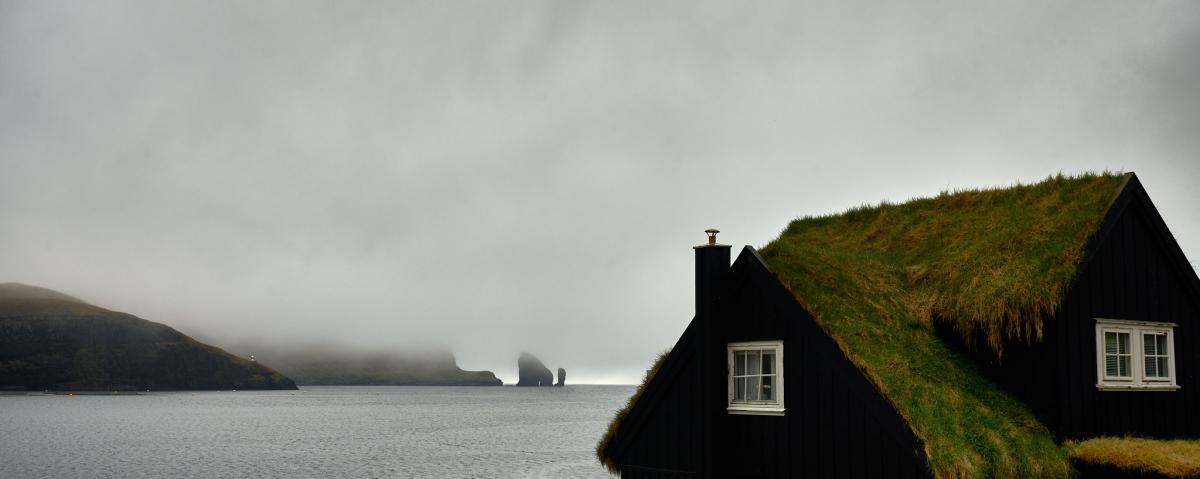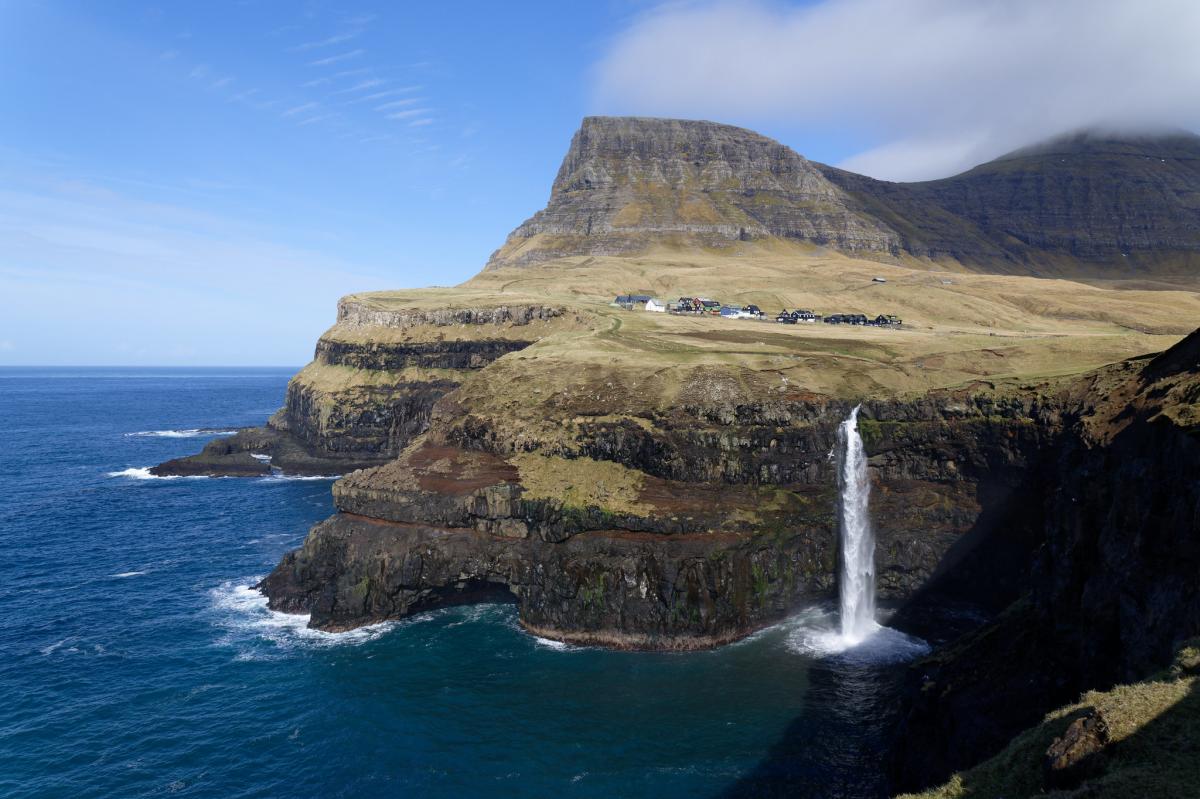SP7VC and SQ7OYL will be active as OY/SP7VC from Faroe Islands, IOTA EU - 018, 23 - 26 July 2023.
They will operate on HF and VHF Bands, with focus on VHF and 6m.
Recent DX Spots OY/SP7VC
QSL via SP7VC.
Previous activity:
SP6IXF and SP7VC will be active from Faroe Islands 10 - 16 August 2009 as OY/SP6IXF and OY/SP7VC.
They are will be active on 160 - 2m.
QSL via home calls.
The Faroe Islands - a picturesque archipelago in the Atlantic Ocean
The Faroe Islands are located in the northern waters of the Atlantic Ocean and are an administrative unit of the Kingdom of Denmark. Iceland and the Shetland Islands are the Faroe Islands' closest neighbors.
Faroes are full of unique flavor that has been forming here for centuries and is due to the geographical isolation of the islands. Breathtaking views of the ocean, mountains shrouded in a haze of mist, no heat and unusual cultural traditions attract thousands of tourists from all over the world. At the same time Faroes are so small (only 1.4 thousand km2), that they are difficult and sometimes impossible to find on the globe, because often they are simply not marked at all on a world map.
 Faroe Islands. Author - Constan Perez.
Faroe Islands. Author - Constan Perez.
Nature and climate of the archipelago
The archipelago includes 18 islands, of which only one is uninhabited. The largest island is Streymoy. The islands have a pronounced relief, riddled with a string of fjords, and the coastline is mostly represented by spectacular bluffs.
Faroes enjoy a temperate maritime climate with comfortable warm winters and cool summers. The warmest weather is in July, but even then, the temperature gauge does not rise above 17 degrees Celsius. In winter the temperature is around zero degrees Celsius. Such mild climatic conditions are due to the tropical sea current, which, among other things, creates a breeding ground for fish in the coastal waters.
History of the Faroe Islands
The first settlers on the archipelago were monks from Ireland, who appeared here in the sixth century AD. Later, the Faroe Islands became a convenient transit point for the Vikings en route from Scandinavia to the Icelandic and Greenlandic colonies. At the end of XII century the archipelago was subjected to Norway and was included in its composition. And from the XIV century Denmark became a co-owner of the islands. In 1814 Faroes fully belonged to Denmark.
During World War II, Britain occupied the islands, but after the establishment of peace they reverted to Denmark. In 1946, a referendum was held where the question of full independence of the archipelago was put forward. But despite the unanimous decision to become independent, the referendum was declared invalid because only two-thirds of the islanders participated in it. In 1948, a compromise was reached and the Faroe Islands were granted partial autonomy within the Danish Kingdom. The islands' own flag was officially recognized, moreover, the local language became the main one in the archipelago, although Danish is also taught in schools and is the official language.
In the 90s of the last century, after significant economic growth, the Faroese economy entered a phase of prolonged crisis. But thanks to Danish subsidies, the islands managed to return to economic growth by 2000. In addition to the competent policy of the Danish government, the development of fisheries and the discovery of oil deposits have contributed to the recovery.
After a long period of unhappiness, the islanders began to talk more and more about their complete independence from Denmark. In order to suppress separatist sentiments, the latter threatened to cancel subsidies if the archipelago became independent.
 Faroe Islands. Author - Marek M..
Faroe Islands. Author - Marek M..
Highlights of the Faroe Islands
City of Torshavn
The largest settlement of the archipelago is located in the southeastern part of the most densely populated island of the archipelago - Streymoy. More than 21 thousand people permanently live in the city and its surroundings. Torshavn was founded in the X century by the Vikings, and officially received the status of the city and the capital of the archipelago in 1909. The name of the settlement was taken from Norse mythology and means "Thor's harbor" in Old Norse.
Today, all the main spheres of archipelago life are concentrated in Torshavn. Next to the city, on a neighboring island, is the archipelago's only international airport, Vagar. There are ferry connections with the nearest neighbors (Denmark, Iceland, Norway and Scotland).
Among the local attractions is the historical center, where you can get acquainted with the traditional housing of the islanders. Some exhibits in the museum are hundreds of years old.
No less impressive is Skansin fortress, built in 1580. The spectacular building, which served as a defense against potential enemy attacks, today delights tourists with its majestic appearance.
While in the capital of the Faroe archipelago, be sure to visit the Museum of Natural History, whose exposition includes a picturesque botanical garden.
Lake Sørvågsvatn
The largest body of water in the Faroe archipelago is located on the island of Voor. The area of the lake is 32.5 sq. km. This amazing place is striking in its pristine beauty. Remarkably, the mirror of the lake is situated above the ocean level, and, flowing down from steep cliffs into the ocean, the lake water forms a waterfall. The lake and its surroundings are one of the favorite places for visitors, who do not deny themselves spectacular photos against the backdrop of stunning scenery.
Gasadalur Village
The tiny village, nestled among the steep cliffs of the island of Voar, is rightfully considered one of the most beautiful places in the Faroe Islands. Less than two dozen people permanently live in the village, but the inhabitants are kept company year-round by tourists from all over the world. Despite the lack of amenities familiar to modern man, visitors love this village because of the magnificent views of the cliffs and the ocean.
 Faroe Islands. Author - Stephen Burrows.
Faroe Islands. Author - Stephen Burrows.
Interesting facts about the Faroe Islands
The Sheep Isles
The name of the Faroe Islands is translated from Danish as "sheep islands", which is consonant with the original Celtic name "land". Even the island's official coat of arms depicts a ram with golden horns and hooves.
Sheep are not just considered the main animals here, they contribute a lot to the development of the islands and their popularization among tourists. So, thanks to the efforts of a local resident appeared Sheep View 360 project by analogy with Street View - the service from Google, where you can see panoramic pictures of streets of different cities of the world. Instead of waiting for the international company to map her native islands online, Durita Dahl Andreassen mounted cameras directly on sheep that swiveled to capture the surrounding scenery. The activist posted the images on social media, making the Faroe Islands famous around the world. Soon Google corrected itself and added panoramic pictures of the islands to Google Maps.
Hospitality of the islanders
On the Faroe Islands islands are very poorly developed restaurant business, and places where you can get acquainted with the local cuisine in some parts of the archipelago is absent at all. Trying to attract as more tourists as possible, locals began inviting everyone who wished to their homes. This action is called "home hospitality," and its essence is to treat foreigners to traditional dishes. During the visit you can not only have a delicious meal, but also communicate with the hosts, feel the local atmosphere and learn more about the intricacies of cooking fish and meat according to old recipes of the Faroese. Cozy gatherings are generously spiced up with stories about local customs and legends.
The practice of home hospitality has become a new word in tourism, and its founders, the Rubeksen family, have been honored with the Embla Award from the Nordic Council of Ministers.
Whaling
Catching grinds (or black dolphins) is a long-standing Faroese tradition that dates back to the 10th century. This tradition, which is quite eerie for the Europeans, is considered by Islanders as their treasure and is treated to the process of hunting with great reverence. It is known that Faroese authorities have a number of disagreements with the International Whaling Commission on this issue. In particular, the islanders do not think that small cetaceans are within the competence of the Commission.
There is no less disagreement with animal protection organizations. One of the voiced arguments against whale hunting in the Faroe Islands is the lack of necessity for it. The islanders themselves position the process as an integral part of their centuries-old culture, which they have no intention of abandoning. Every year, the Faroese kill about a thousand whales, and the meat is not sold, but shared among the islanders who took part in the bloody hunt.

